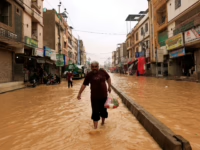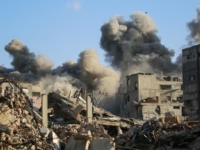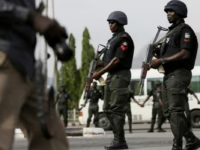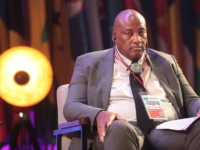US President Donald Trump has reaffirmed that the ceasefire in Gaza remains active, despite recent lethal Israeli air raids targeting the region. Israel justified these strikes by accusing Hamas of breaching the truce.
These Israeli operations focused on Hamas strongholds in southern Gaza, following allegations that the militant group launched attacks against Israeli forces, violating the nine-day-old ceasefire agreement.
When questioned about the status of the ceasefire, Trump, who played a pivotal role in negotiating the agreement, responded simply, “Yes, it is still in place.” He further suggested that any violations were likely the actions of rogue elements within Hamas rather than directives from its central leadership.
“Our goal is to ensure lasting peace with Hamas,” Trump emphasized. “We will address any issues firmly but with appropriate measures.”
According to Gaza’s civil defense, which operates under Hamas control, the Israeli strikes resulted in at least 45 fatalities across the territory. Four hospitals in Gaza confirmed these casualty figures to AFP. The Israeli military stated it is investigating these reports. Due to restricted media access in Gaza, independent verification of the casualty numbers remains challenging.
The Israeli Defense Forces (IDF) announced that they had resumed strict enforcement of the ceasefire on Sunday but warned they would respond decisively to any further violations.
Hamas has denied the accusations, with officials accusing Israel of manufacturing excuses to reignite hostilities. A security source informed AFP that Israel has halted the delivery of humanitarian aid into Gaza, citing the alleged ceasefire breaches. This suspension of aid has been a recurring issue during the conflict, prompting the United Nations to raise alarms about potential famine in the region.
Initiated on October 10, the ceasefire brought a pause to over two years of intense conflict. It laid the groundwork for prisoner and hostage exchanges and outlined a comprehensive plan for Gaza’s reconstruction and future stability. However, the agreement has faced immediate obstacles in its execution.
On Sunday, Israel reported the deaths of two soldiers during confrontations in Rafah. The military stated that militants fired anti-tank missiles and opened fire on IDF troops, prompting retaliatory air and artillery strikes. Palestinian eyewitnesses described fierce clashes in parts of Rafah still under Israeli control.
“It feels as though the conflict has reignited,” said Abdullah Abu Hasanin, 29, from the Al-Bureij refugee camp. “The aftermath of the bombing is beyond words-bloodshed has returned.”
Israel’s Defense Minister, Israel Katz, warned that Hamas would face severe consequences for every violation of the ceasefire, promising that Israel’s responses would escalate in intensity.
Meanwhile, Izzat Al-Rishq, a member of Hamas’s political bureau, reiterated the group’s dedication to the ceasefire, accusing Israel of persistent violations and fabricating excuses to justify its actions. Hamas’s military wing claimed no involvement or knowledge of the reported clashes in Rafah.
US Vice President JD Vance urged Gulf Arab nations to develop a “security framework” aimed at disarming Hamas, a critical component of the peace plan.
Under Trump’s 20-point proposal, Israeli forces have pulled back beyond the so-called Yellow Line, maintaining control over approximately half of Gaza, including border areas but excluding major urban centers.
In exchange, Hamas has freed 20 surviving hostages and is cooperating in the return of deceased individuals. Israel handed over 15 Palestinian bodies to Gaza on Sunday, bringing the total returned to 150. The reopening of the Rafah crossing, Gaza’s primary entry point, remains contingent on the complete recovery of all bodies.
The conflict, sparked by Hamas’s October 7, 2023 assault on Israel, has resulted in at least 68,159 deaths in Gaza, according to the Hamas-run health ministry. These figures do not differentiate between civilians and combatants but indicate that over half of the casualties are women and children. The October attack by Hamas caused 1,221 fatalities in Israel, predominantly civilians.























0 Comments